| |
|

|
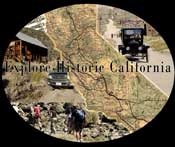
Visit our
Explore Historic California
site on

|
CERRO
GORDO UPDATE
1/01/2015 |
|
 |
|
*
Please contact owner
Sean Patterson for information about visiting Cerro Gordo
*
smpatterson1978@gmail.com
Contact
us through email at:
 |
|
|
Shop Amazon
Smile
and
Support FOCG!
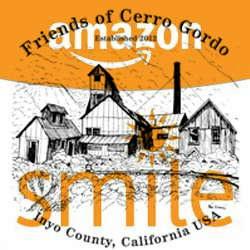
It's the
same Amazon!
About Product
Availability, Pricing and Services:
AmazonSmile
has the same wide selection of products, low prices, and
convenient shopping features as Amazon.com,
including Amazon Prime member benefits.
Purchases Eligible for
Donations:
Tens of
millions of products on AmazonSmile are eligible for
donations. You will see eligible products marked
“Eligible for AmazonSmile donation” on their product
detail pages.
Click
the FOCG/Amazon Smile logo above or visit:
http://smile.amazon.com/ch/46-1426436 |
|
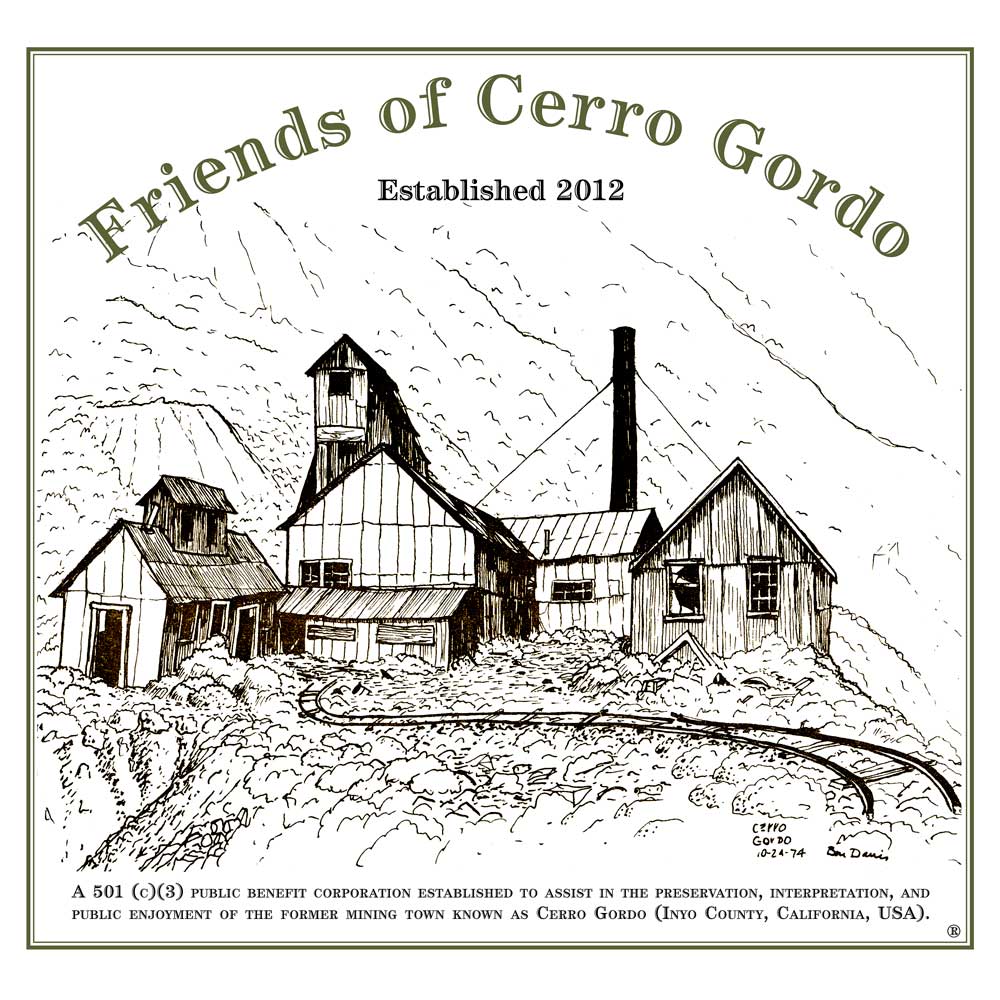 |
Join
Friends of
Cerro Gordo
The
Friends of Cerro Gordo is a 501(c)(3) public benefit
corporation established to assist in the preservation,
interpretation and public enjoyment of Cerro Gordo.
Help support these efforts by becoming a member.
Click on the FOCG logo (above) for additional information
and to join or make a donation.
Membership is only $10.
 |
|
|
Now Available
Cerro Gordo
A
Ghost Town
Caught Between
Centuries |
|
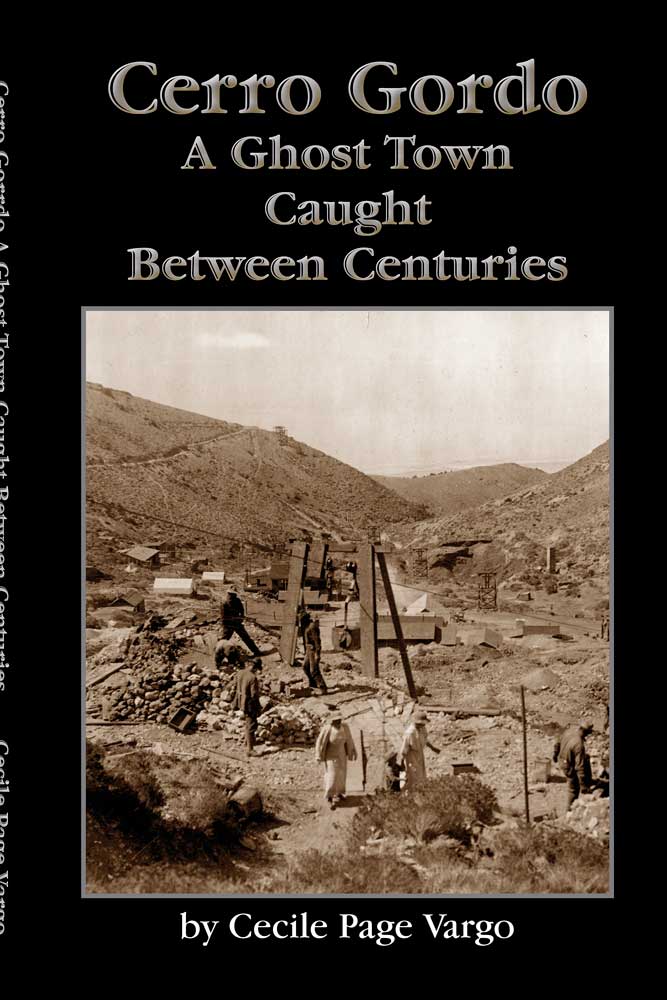 |
|
Cecile Page Vargo's collection of
Cerro Gordo stories, true, farce and somewhere in between,
is being published in a new book,
Cerro Gordo A Ghost Town Caught Between Centuries.
ISBN: 978-0970025869
The book gives glimpses of
Cerro Gordo from the silver and lead mining days through the
early twentieth century zinc era to its modern place as,
according to author Phil Varney, "Southern California's
best, true, ghost town." There's even a possible solution to
the location of the fabled "Lost Gunsight Mine" that former
Cerro Gordo owner Mike Patterson once suggested.
We are proud to team with the
Historical Society of the Upper Mojave Desert (HSUMD) in
Ridgecrest, Calif., to bring Cerro Gordo A Ghost Town
Caught Between Centuries to print. This is their first
major publishing venture. The book is available for
sale directly from HSUMD or through selected book sellers.
Contact
HSUMD directly to order:
P.O. Box 2001, Ridgecrest, CA. 93556-2001.
Phone: 760 375-8456
Email:
hsumd@ridgenet.net
Announcing our Arcadia Publishing Book:
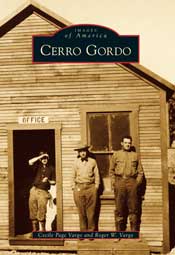
Cerro Gordo
by
Cecile
Page Vargo and Roger W. Vargo
ISBN: 9780738595207
Arcadia Publishing
Images of America series
Price: $21.99
128 pages/ softcover
Available
now!
(Click the cover image for ordering information)
Available at
area bookstores, independent retailers, and online
retailers, or through Arcadia Publishing at
(888)-313-2665 or
online.
|
|
|
 |
|
 |
|
Mules can
taste the difference--so can you |
|
 |
 |
|
Friends
of Last Chance Canyon is a new organization interested in
sustaining and protecting areas within the El Paso
Mountains, near Ridgecrest, California. The main focus is
preserving and protecting historic sites like Burro
Schmidt's tunnel and the Walt Bickel Camp.
Please click
on either logo to visit the FLCC site. |
|
|
We
support |
|
 |
|
|

Bodie Foundation
"Protecting Bodie's Future by Preserving Its Past |
|
|
 |
|
|
|
Click on Room 8's
photo or phone
951-361-2205
for more information. |
|
|
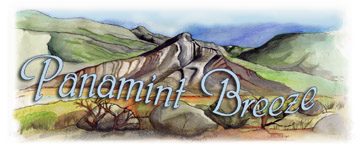 |
|
The Panamint Breeze is a newsletter for people who
love the rough and rugged deserts and mountains of
California and beyond.
Published by Ruth and Emmett Harder, it is for people who
are interested in the history of mining in the western
states; and the people who had the fortitude to withstand
the harsh elements.
It contains stories of the past and the present; stories of
mining towns and the colorful residents who lived in them;
and of present day adventurers.
Subscriptions are $20 per year (published quarterly –
March, June, September & December) Subscriptions outside the
USA are $25 per year. All previous issues are available.
Gift certificates are available also.
To subscribe mail check (made payable to Real Adventure
Publishing) along with name, address, phone number & e-mail
address to: Real Adventure Publishing, 18201 Muriel
Avenue, San Bernardino, CA 92407.
For more information about the
Panamint Breeze e-mail Ruth at: echco@msn.com |
|
|
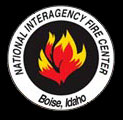 |
|
It's always
FIRE SEASON! Click the NIFC logo above to see what's
burning. |
|
|
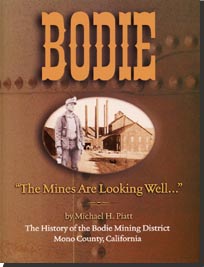 |
|
Visit Michael
Piatt's site,
www.bodiehistory.com, for
the truth behind some of Bodie's myths. |
|
|

Credo Quia Absurdum |
|
Explore
Historic California! |
|
Not too many years ago, the family station wagon was the magic carpet to
adventure. Today, that family station wagon is likely to be a four wheel
drive sport utility vehicle or pick up truck. SUV's and other 4x4's are
one of the best selling classes of vehicles. Ironically, industry
statistics show that once purchased, few owners will dare to drive their
vehicles off the paved highway.
Click your mouse through the website and enjoy our armchair adventures
and the histories behind them.
|
|
Frontier Christmas
Chronicles
Compiled by Cecile Page Vargo
|
This season we are sharing the words of travelers to
California in the 1840's.
|
 |
| |
|
Christmas on the
Frontier
As the emigrants crossed the great continent to the
western frontier, if they were lucky their reports were similar to those
of Catherine Haun (below), and went on to celebrate more traditional
holidays in the years to come in their new homeland. A stand of
evergreen trees was nearby for some, and the family would choose one,
chop it down, carry it home and decorate it with cranberry and popcorn
strands, colored ribbons, paper cutouts, and candy apples. Tin candle
holders would have been cut out and fastened to the branches complete
with homemade dripped candles to be carefully lit for brief minutes as
the celebrations began. Wood carved and hand painted animals and
figurines, as well as drums and boxes often adorned the tree as well.
Where evergreen forests were missing, a stick of cottonwood or a
sagebrush often served as a Christmas tree. Scraps of gathered wood were
often fastened together in the shape of a tree when there was no other
option.
The night before Christmas was a time of
preparation, with long red stockings hung by the fireplace or pot
bellied stove waiting to be stuffed with hand pulled Christmas taffy,
home baked gingersnaps apples, and oranges and nuts, if available. The
house was filled with the smells of cakes, cookies, and candies being
prepared on a wooden cook stove and oven. A holiday dinner was served
for friends and neighbors, complete with Christmas poems, prayers,
traditional carols, and children’s games, with celebrations continuing
through Christmas day itself.
Early frontier gifts would have been homemade for
the most part, in the form of knitted clothing, rag or carved wood
dolls, baked goods, blocks, toy animals, dollhouses, wagons and train
sets. Children in poor families felt lucky to receive a doll fashioned
from a twig, a corn husk or a potato. The wealthy could order catalog
gifts or purchase at a nearby general store as towns grew around meager
pioneer settlements. The practice of gift wrapping was not common until
the 1880’s.
Those lucky enough to buy Christmas gifts chose
from the practical items – pencils handkerchiefs, aprons, and underwear.
Books were a treasured gift for those in the wilderness, and often
passed from home to home for entertainment during the long winters.
Knives, sewing kits, slippers scarves, cologne, cigars, silver or gold
pens, pencils, boots, hats, teapots and jewelry were among the popular
store bought items for adults. The fortunate child received bought china
dolls, doll furniture, toy trains, miniature tea sets, toy animals,
small drums, music boxes, storybooks, playing cards, dominoes, candy and
money. Fruits were a rarity in winter, with oranges being a popular gift
for all ages.
As families and friends gathered for celebrations,
stories of the first Christmas, tales of Saint Nick, and remembrances of
holidays past were shared. For many a frontier settler, the memories
were not often so cherished, and may have been kept hushed, but many
were recorded in diaries, journals, ship logs, newspaper stories, and
history books. |
| |
|
Catherine Haun
1849
...We reached Sacramento on November
4, 1849, just six months and ten days after leaving Clinton, Iowa, we
were all in pretty good condition…
Although very tired of tent life many
of us spent Thanksgiving and Christmas in our canvas houses. I do not
remember ever having had happier holiday times. For Christmas dinner we
had a grizzly bear steak for which we paid $2.50, one cabbage for $1.00
and – oh horrors – more dried apples! And for a Christmas present the
Sacramento river rose very high and flooded the whole town! ... It was
past the middle of January before we reached Marysville – there were
only a half dozen houses; all occupied at exorbitant prices. Someone was
calling for the services of a lawyer to draw up a will and my husband
offered to do it for which he charged $150.00.
This seemed a happy omen for success
and he hung out his shingle, abandoning all thought of going to the
mines. As we had lived in a tent and had been on the move for nine
months, traveling 2400 miles we were glad to settle down and go
housekeeping in a shed that was built in a day of lumber purchased with
the first fee… |
| |
|
Diary from the
Oregon Trail:
We (arrived) December 17, 1846, and father did not
get there until Christmas Day. After a week or so we moved into a cabin,
there was no floor in the cabin, just earth. There was but one room
(and) a big chest and Mother filled this full of clothing and Betty (a
sister) and I slept in that. We lived on boiled peas and boiled wheat
that winter. |
| |
|
The Donner Party
1846
Diary of Patrick Breen
Thursday 24th (December 1846)...poor
prospect for any kind of comfort spiritual or temporal. may God help us
to spend the Christmass (sic) as ought considering our circumstances.
Friday 25th…offered. Our prayers to God this Christmass
morning with the prospect is apallng but hope in God Amen.
Patty Reed’s Letter To Historian C.F.
McGlashan
Christmas Eve came, no stockings to hang, no Santa
Claus to come down our chimney in that cold yes starving camp. No Papa
to come home to his little ones and bring all he could get to please his
wife and children. Christmas morning came, you could not hear that happy
sound “Merry Christmas” ring through the hall. Our breakfast was ready,
a pot of glue. It was stewed ox hide, but we were pleased to have even
that to eat. But as soon as we had gone through this…our poor Mother’s
face began to brighten up and she would get a bucket of snow, melt it
and heat it, carry it out of the cabin door and pour it on the snow at
the corner of the cabin..until she had melted away the snow, away from
the hidden treasure.
Virginia Reed continues the story,
describing the hidden treasure:
My mother had determined weeks before that her
children should have a treat on this one day. She had laid away a few
dried apples, some beans, a bit of tripe and a small piece of bacon.
When this hoarded store was brought out the delight of the little ones
new no bounds. The cooking was watched carefully and when we sat down to
our Christmas dinner, mother said, “Children, eat slowly, for this one
day you can have all you wish.” So bitter was the misery relieved , that
I have never since sat down to a Christmas dinner without my thoughts
going back to Donner Lake.
Mary Murphy (also of the Donner Party)
Christmas we had a meal of boiled bones and oxtail
soup. After supper Mother was barely able to put the babies to bed, and
later on that evening with brother William reading her favorite psalm
from the Good Book, she became bedridden and seriously ill. |
| |
|
Journal of J. Goldsborough Bruff,
Captain of Lassen Trail emigrant party, December 24, 1849
Well, here’s a Christmas for us, under werry peculiar
circumstances..In the afternoon we cleaned off the snow and got the hind
quarter (of an ox carcass)..Roasted a piece and dined heartily, and with
more satisfaction tha many in better circumstances. After dinner we
smoked our pipes..I spoke of merriment, mince-pies, egg-nog turkey, etc.
and he, of roast sirloin, plum pudding, punch, ale.etc….We cut up some
running geer of a wagon and had a lively fire. “Well” says friend Poyle,
“Cap, we are both philosophers and may we not have some sort of a
Christmas here?” “Yes”, I replied, “But how-Why?” Rejoined he “we can
each sing a song, and tell a story: then take a pot of coffee, and all
it ale, egg-nogg, or what you please.” “Nough said.” And at it we went;
- each sang 2 or 3 songs, and related several anecdotes then smoked our
pipes again, and thus enjoyed ourselves. |
| |
|
Death Valley
49’ers Diaries at Travertine Springs
William Lewis Manly
December 24, 1849 - As I recollect this was
Christmas day and about dusk I came upon the camp of one man with his
wife and family, the Rev. J. W. Brier, Mrs. Brier and sons..When I
arrived at his camp I found the revered gentleman very cooley delivering
a solemn discourse on the benefits of early education when, it seemed to
me, starvation was staring us all in the face, and the barren desolation
all around gave promise of the need of any education higher than the
natural impulses of nature. None of us knew exactly where we were, nor
when the journey would be ended, nor when substantial relief would come.
Juliet Brier
About midnight we came around a big rock and there
was my husband at a small fire. “Is this the camp?” I asked. “No, its
six miles farther, “ I was ready to drop and Kirke was almost
unconscious, moaning for a drink. Mr. Brier took him on is back and
hastened to camp to save his little life. It was three o’clock Christmas
morning when we reached the springs..We found hot and cold springs there
and scrubbed and rested. That was a Christmas none would ever forget.
My little ones had no thoughts of Santa Claus that
year. The men killed an oxen for our Christmas, but the flesh was more
like poisonous slime than meat. There was not a particle of fat on the
bones, but we boiled the hide and hoofs for what nutriment they might
contain. We also cooked ate the little blood there was in the carcass. I
had one small biscuit, but we had plenty of coffee and I think it was
that which kept us alive.
Music and singing My, No! We were too far gone for
that. Nobody spoke very much, but I knew we were all thinking of home
back east and of the cheer and good things there. |
| |
|
Diary of Sally
Hester, age 14, Fremont California
December 24, 1849
Still raining. It has been a sad Christmas for
mother. She is homesick, longs for her old home and friends. It’s hard
for old folks to give up old ties and go so far away to live in a
strange land among strange people. Young people can easily form new ties
and make new friends and soon conform to circumstances, but it’s hard
for the old ones to forget. Was invited to a candy pull and had a nice
time. Rather a number of young folks camped here. This is a funny
looking town anyway. Most of the houses are built of brush. Now that the
rains have set in. people are beginning to think of something more
substantial. Some have log cabins. |
| |
|
Ships Logs
Trip Around The Horn to San Francisco 1849
Tues. 25th Christmas today and celebrated in
different ways. The mate began in his way, by striking the cook under
the eye and making it black and blue. Had 2 pigs for dinner & apple
duff. 2 thirds of the passengers drunk besides Capt & mate & 1 or 2
hands. The mate pulled Choate from Portlane of the forecastle and struck
him several blows on the head, when some of the passengers cried out
“throw him overboard.” As soon as he heard this he left for his cabin.
Some sympathy for the cook and the sailor.
Myer Newmark, 14 years old December 1852 at
sea somewhere between New York and San Francisco with his mother on the
way to join his father
Tues. 25th Christmas Day. It is a beautiful
day...The sea and the sky are a most beautiful blue, and everything
looks happy, merry and cheerful. We all did justice in the dainty dinner
set before us, which consisted of roast & Boiled fowl, vegetables, plum
pudding and applesauce fruits and cider. |
|

Happy Holidays and a Joyous 2016
from Explore Historic California |
|
|
|
